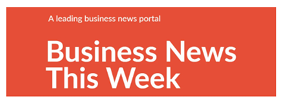A recent study by Harvard Business School revealed something startling: the average office worker loses over two hours a day to inefficient processes. That’s more than 500 hours a year, lost to searching for files, switching between tools, and chasing follow-ups. For small businesses, that time bleed isn’t just frustrating—it’s expensive. The real question isn’t whether these inefficiencies exist. It’s what to do about them before they start eating into revenue. Smart tools are one part of the solution. But what really drives results? A mindset shift in how digital workflows are approached.
When Work Turns into Friction
The modern workday rarely starts with strategy. More often, it begins in the weeds—trying to find the right PDF, juggling video calls, or logging into a forgotten platform for the third time. Friction like this builds up. One Berlin-based IT startup with just seven employees decided to cut through it. The team restructured its internal systems and introduced lean, efficient tools tailored to its size. Among them: a PDF editor alternative to Adobe, offering all the core features of Acrobat—without the complexity or price tag. The real breakthrough wasn’t the switch itself but how the team reimagined its entire toolkit. Software wasn’t there to just “assist”—it had to actively do the work.
Calendars Should Think, Not Just Display
For many professionals, the calendar has become a graveyard of obligations. Meetings, reminders, overlapping blocks—yet no real plan. This is where AI-driven scheduling apps are quietly transforming how small teams work. Tools like Motion or Reclaim.ai don’t just manage time—they learn behavior, prioritise critical tasks, and create space for deep work.
One mid-sized recruitment agency in Frankfurt had been relying on four separate scheduling platforms. The result? Missed messages, double bookings, and constant miscommunication. After switching to a single intelligent system, their client response time dropped by 38%. Not because anyone worked longer hours—just smarter ones.
Fixing Communication Before It Breaks You
Slack, Teams, email chains, WhatsApp groups—today’s digital comms are a tangled web. Instead of connecting people, they often create confusion and fatigue. A young consulting firm in Cologne took a bold step: they cut all tools but one. They designed structured channels for updates, Q&As, and deep project discussions—all in one platform.
The change paid off. Message volume rose slightly, but stress levels dropped. The reason? Everyone knew exactly where to find what. Communication, suddenly, had a shape—and a strategy.
Organising Files Shouldn’t Feel Like Archaeology
File management isn’t just a back-office chore—it’s a frontline productivity killer. Wasting time clicking through file versions, outdated folders, or poorly named documents chips away at focus. Smarter document systems now use AI to tag, version, and surface the right files—when and where they’re needed.
One family-run interior design business in Leipzig spent years relying on a rigid folder hierarchy. Eventually, it became a maze. Switching to a dynamic document platform gave them back control—and time.
Automate What’s Draining You
Not every task should be manual. But not every process should be automated either. The trick is knowing what to hand off. Automating the wrong process creates chaos. Get it right, and it changes everything. For example, one creative agency in Hamburg automated new client intake: web form leads now instantly populate their planning board, complete with a proposed intro meeting. No admin work. More conversions.

